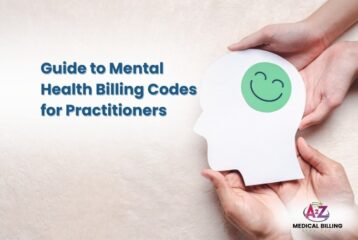In the field of rehabilitation, accurate coding is crucial for ensuring proper billing and reimbursement. Rehabilitation CPT codes are used to classify various therapeutic procedures and services, enabling healthcare providers to document treatments accurately and secure appropriate payments. This guide aims to provide an in-depth understanding of these codes, along with best practices for their use in different rehabilitation specialties.
Comprehensive Rehabilitation Codes List
Accurate Rehabilitation procedure codes are essential for accurately documenting and billing various therapeutic procedures. This list includes codes for physical, occupational, and speech therapies, as well as specific codes for inpatient rehabilitation. By utilizing these detailed codes, healthcare providers can ensure precise billing and reimbursement, ultimately improving patient care and compliance with regulatory standards.
Physical Therapy CPT Codes
Physical therapy involves various procedures aimed at improving a patient’s physical function. Key CPT codes include:
- 97110 – Therapeutic exercises to develop strength, endurance, range of motion, and flexibility.
- 97112 – Neuromuscular reeducation of movement, balance, coordination, kinesthetic sense, posture, and proprioception.
- 97116 – Gait training therapy to improve walking and mobility.
- 97140 – Manual therapy techniques including mobilization and manipulation.
- 97012 – Mechanical traction therapy.
- 97035 – Ultrasound therapy for deep tissue treatment.
- 97161 – Physical therapy evaluation: low complexity.
- 97162 – Physical therapy evaluation: moderate complexity.
- 97163 – Physical therapy evaluation: high complexity.
- 97164 – Physical therapy re-evaluation.
Occupational Therapy CPT Codes
Occupational therapy helps patients develop, recover, or maintain daily living and work skills. Important codes include:
- 97530 – Therapeutic activities involving dynamic activities to improve functional performance.
- 97535 – Self-care/home management training, such as meal preparation, safety procedures, and using assistive devices.
- 97542 – Wheelchair management, including assessment, fitting, and training.
- 97165 – Occupational therapy evaluation for low complexity.
- 97166 – Occupational therapy evaluation for moderate complexity.
- 97167 – Occupational therapy evaluation for high complexity.
- 97168 – Occupational therapy re-evaluation.
Speech Therapy CPT Codes
Speech therapy focuses on communication disorders and swallowing dysfunctions. Key CPT codes include:
- 92507 – Treatment of speech, language, voice, communication, and auditory processing disorder.
- 92521 – Evaluation of speech fluency (e.g., stuttering).
- 92523 – Evaluation of speech sound production with language comprehension and expression.
- 92524 – Behavioral and qualitative analysis of voice and resonance.
- 92508 – Group speech/hearing therapy sessions.
Aquatic Therapy CPT Codes
Aquatic therapy uses water-based exercises to aid in physical rehabilitation. Key CPT codes include:
- 97113 – Aquatic therapy with therapeutic exercises to enhance physical function.
- 97022 – Whirlpool therapy for improving circulation, reducing muscle spasms, and aiding in joint mobility recovery.
Chiropractic Therapy CPT Codes
Chiropractic therapy involves spinal adjustments and manipulations. Key CPT codes include:
- 98940 – Chiropractic manipulative treatment (CMT); spinal, 1-2 regions.
- 98941 – Chiropractic manipulative treatment (CMT); spinal, 3-4 regions.
- 98942 – Chiropractic manipulative treatment (CMT); spinal, 5 regions.
Impairment Group Codes for Inpatient Rehab
Impairment group codes categorize patients in inpatient rehabilitation facilities based on their primary condition:
- 01 – Stroke.
- 02 – Traumatic brain injury.
- 03 – Non-traumatic brain injury.
CMG Codes for Inpatient Rehab
Case Mix Group (CMG) codes are used for categorizing patients in inpatient rehab facilities based on their clinical complexity:
- A0101 – Stroke with motor score < 27.05.
- B0101 – Stroke with motor score 27.05 – 33.35.
- C0101 – Stroke with motor score > 33.35.
Inpatient Rehab Procedure Codes
Inpatient rehabilitation CPT codes are used to document and bill therapeutic services provided within a hospital or inpatient setting:
- 97545 – Work hardening/conditioning; initial 2 hours.
- 97546 – Work hardening/conditioning; each additional hour.
- 97110 – Therapeutic exercises to develop strength, endurance, range of motion, and flexibility.
- 97112 – Neuromuscular reeducation of movement, balance, coordination, kinesthetic sense, posture, and proprioception.
- 97116 – Gait training therapy to improve walking and mobility.
- 97140 – Manual therapy techniques including mobilization and manipulation.
- 97750 – Physical performance test or measurement.
- 97755 – Assistive technology assessment.
- 97032 – Electrical stimulation therapy to treat muscle and nerve pain.
- 97036 – Hydrotherapy.
- 97016 – Vasopneumatic devices.
- 97597 – Active wound care management of wounds.
- 97598 – Subsequent wound care management.
Outpatient Rehabilitation CPT Codes
Outpatient rehabilitation CPT codes are used to document and bill for therapeutic services provided outside a hospital setting. These codes include evaluations, therapeutic exercises, and specialized treatments:
- 97161 – Physical therapy evaluation: low complexity.
- 97162 – Physical therapy evaluation: moderate complexity.
- 97163 – Physical therapy evaluation: high complexity.
- 97164 – Physical therapy re-evaluation.
- 97530 – Therapeutic activities involving dynamic activities to improve functional performance.
- 97535 – Self-care/home management training, such as meal preparation, safety procedures, and using assistive devices.
- 97542 – Wheelchair management, including assessment, fitting, and training.
- 97110 – Therapeutic exercises to develop strength, endurance, range of motion, and flexibility.
- 97112 – Neuromuscular reeducation of movement, balance, coordination, kinesthetic sense, posture, and proprioception.
- 97116 – Gait training therapy to improve walking and mobility.
- 97140 – Manual therapy techniques including mobilization and manipulation.
- 97032 – Electrical stimulation therapy to treat muscle and nerve pain.
- 97035 – Ultrasound therapy for deep tissue treatment.
Other Rehabilitation Procedure Codes
- 97545 – Work hardening/conditioning; initial 2 hours.
- 97546 – Work hardening/conditioning; each additional hour.
- 97750 – Physical performance test or measurement.
- 97755 – Assistive technology assessment.
- 97032 – Electrical stimulation therapy to treat muscle and nerve pain.
- 97036 – Hydrotherapy.
- 97016 – Vasopneumatic devices.
- 97597 – Active wound care management of wounds.
- 97598 – Subsequent wound care management.
- 97035 – Ultrasound therapy used for treating conditions requiring deep heat to soft tissues and joints.
Best Practices for Rehabilitation Coding
Accurate and efficient coding is essential for ensuring that healthcare providers receive appropriate reimbursement for their services. Here are some best practices to follow for rehabilitation coding, focusing on the use of rehabilitation codes, impairment group codes inpatient rehab, and CMG codes for inpatient rehab:
Accurate Documentation
- Detailed Patient Records: Ensure that all patient interactions, treatments, and outcomes are meticulously documented. This includes initial assessments, treatment plans, progress notes, and discharge summaries.
- Source: Proper documentation supports the necessity of services and justifies the billing of rehabilitation codes.
- Specificity in Coding: Use the most specific codes available to accurately reflect the services provided. Avoid using unspecified codes when a more detailed code is applicable.
- Source: Specific coding improves the accuracy of claims and reduces the likelihood of denials or audits.
Use of Technology
- Electronic Health Records (EHRs): Utilize EHRs to streamline the documentation and coding process. EHRs can help ensure that all necessary information is captured and can be easily accessed for coding purposes.
- Source: EHRs improve the efficiency and accuracy of medical billing by providing comprehensive patient data in real-time.
- Coding Software: Implement coding software to assist in selecting the correct codes and to keep up with changes in coding standards.
- Source: Coding software can reduce errors and enhance the productivity of medical coders.
Regular Training and Education
- Continuous Education: Stay updated with the latest coding changes and guidelines. Regular training sessions and certification renewals for coding staff are essential.
- Source: Ongoing education helps coders stay informed about updates in CPT, ICD-10, and HCPCS codes.
- Compliance with Regulatory Standards: Ensure that all coding practices comply with current regulatory standards and payer-specific requirements. This includes adhering to guidelines set by CMS and other regulatory bodies.
- Source: Compliance reduces the risk of audits and penalties.
Common Coding Errors to Avoid
- Upcoding and Downcoding: Avoid coding for a higher or lower level of service than what was actually provided. Both practices can lead to compliance issues and financial penalties.
- Source: Accurate coding reflects the true level of service and ensures proper reimbursement.
- Duplicate Billing: Ensure that services are not billed more than once. Implement checks within your billing system to catch duplicate entries before claims are submitted.
- Source: Duplicate billing can lead to claims denials and repayment demands from payers.
Use of Modifiers
- Appropriate Use of Modifiers: Apply modifiers correctly to provide additional information about the services rendered. For example, use modifiers to indicate a distinct procedural service or services provided by different practitioners.
- Source: Correct use of modifiers ensures that claims are processed accurately and efficiently.
- Documentation for Modifiers: Provide detailed documentation to support the use of any modifiers. This helps justify the necessity of the modifier and reduces the likelihood of claim rejections.
- Source: Proper documentation supports the use of modifiers and helps in successful claims processing.
Challenges and Solutions in Rehab Coding
Rehabilitation coding can be complex due to the detailed documentation required and the ever-changing coding guidelines. Here are some common challenges faced in rehabilitation coding and practical solutions to address them:
Common Coding Errors
- Upcoding and Down Coding
- Challenge: Coding for a higher or lower level of service than what was actually provided can lead to compliance issues and financial penalties.
- Solution: Ensure that coding accurately reflects the true level of service provided. Regular audits and training sessions can help maintain coding accuracy and compliance.
- Duplicate Billing
- Challenge: Billing for the same service more than once can lead to claim denials and repayment demands.
- Solution: Implement checks within the billing system to catch duplicate entries before claims are submitted. Regularly review billing practices and educate staff on the importance of accurate billing.
- Incorrect Use of Modifiers
- Challenge: Incorrect application of modifiers can result in claim rejections and delays in reimbursement.
- Solution: Educate coding staff on the correct use of modifiers and ensure that detailed documentation supports their use. Regularly update coding guidelines and resources to reflect current practices.
Staying Updated with Coding Changes
- Frequent Changes in Coding Guidelines
- Challenge: Keeping up with frequent changes in CPT, ICD-10, and HCPCS codes can be difficult for coding staff.
- Solution: Subscribe to coding update services and regularly attend coding workshops and webinars. Use coding software that is updated with the latest guidelines to assist in accurate coding.
- Regulatory Compliance
- Challenge: Ensuring compliance with various payer-specific regulations and billing criteria can be complex.
- Solution: Develop a compliance program that includes regular training, audits, and reviews of payer-specific guidelines. Maintain open communication with payers to stay informed about changes and requirements.
Accurate Documentation
- Incomplete or Inaccurate Documentation
- Challenge: Incomplete or inaccurate documentation can lead to incorrect coding and denied claims.
- Solution: Train healthcare providers on the importance of thorough documentation. Implement EHRs to streamline documentation processes and ensure that all necessary information is captured accurately.
- Time-Consuming Documentation Processes
- Challenge: Detailed documentation can be time-consuming and burdensome for healthcare providers.
- Solution: Utilize templates and standardized forms to simplify the documentation process. Encourage the use of voice recognition software to speed up the recording of patient information.
Let’s Recap
Accurate coding is pivotal for Rehab centers and the quality of patient care. By following best practices, such as maintaining detailed documentation, utilizing advanced technology, and staying updated with coding changes, providers can enhance the coding accuracy and efficiency. This not only ensures proper reimbursement but also compliance with regulatory standards.
In summary, the successful application of rehabilitation CPT codes by avoiding coding errors and duplicate billing, and using modifiers correctly, requires continuous education and regular audits. By implementing these solutions, healthcare providers can navigate the complexities of rehabilitation coding more effectively.



